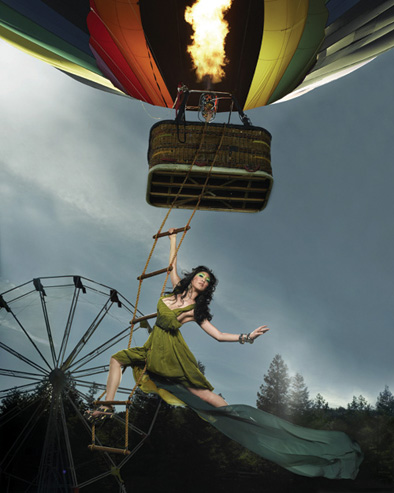By David Yi
On a late Sunday afternoon, a groggy Sheena Sakai explains why the ratings of this cycle’s America’s Next Top Model were especially high. Forget about the season’s over-the-top photo shoots (in one, the models had to emulate various Los Angeles disasters such as traffic — don’t ask), or the buzz surrounding the show’s first transgender model, or even the fact that at one point host Tyra Banks appeared as a robot from the future. For all Sakai knows, the season was a success because, well, she was there.
“I’ve done my research, and every time they played me on the previews, they’d have higher ratings,” she says.
[ad#336]
There’s no doubt the 22-year-old from Harlem was a fan favorite of The CW’s reality competition, which recently wrapped its 11th cycle. She finished sixth largely due to her strong personality, “soft” pictures and humorous quirks. A few of Sakai’s televised antics: posing with a handbag next to her crotch with one leg stretched behind her head, trying to prove she wasn’t “hooch,” and confessing that indeed, her breasts aren’t real.
“I knew what they were doing,” she says of the execs showcasing her so frequently. “You need ratings? I bring ratings.”
Sakai says her confidence flourished when she learned to embrace her unique background. Born to a Japanese American father who worked as a stuntman on productions like Magnum P.I. and Hawaii Five-O and an immigrant mother from South Korea, Sakai and her younger sister, Minjee, grew up on a Hawaiian plantation house built by their paternal grandfather.
“My life hasn’t always been easy,” she says. “I was an outcast in school, I wore secondhand clothing, I was often ridiculed for my Asian face. [It was] tough growing up. But I learned that when you go through things … you grow and it makes you stronger.”
[ad#336]
At a young age, Sakai knew she wanted to pursue the entertainment industry, partly to help break barriers. “Growing up being Asian American, you don’t see a lot of [faces like yours.] Where’s the person that represents me?” she says. Her parents supported her dream and worked hard to put her in dance, singing and drama classes. Through singing, Sakai got a taste of the limelight as she performed on the Hawaiian festival circuit.
At age 19, Sakai moved to New York for greater opportunities. She produced an album, 7-7-07, and started working as both a go-go dancer and a stunt actress. While doing stunt work for the movie Tropic Thunder, she caught the eye of casting directors who asked if she was interested in the show.
The way Sakai flaunted her heritage throughout the season was a stark contrast to the insecurities of past Asian American contestants like Gina Choe (cycle 6), a Korean American who admitted she “wouldn’t date Asian guys because they’re short” and Anchal Joseph (cycle 7), an Indian American who was self-conscious about her dark skin.
“I’m gonna show you, America,” Sakai declared on one of the first episodes. “You ain’t ready for this yellow fever. One time for the Asians!”
During the castings, judge Jay Alexander commented: “She has the booty of a black girl, the grace of a Japanese geisha, and the class of a Korean princess.”
Now that the show is over, Sakai says she wants to distance herself from it, and even turned down an opportunity to appear on The Tyra Show.
“I want to go back [to The Tyra Show] when I’ve made it,” she says. When asked about Banks as a person, Sakai coyly responds: “What you see is what you get.”
Sakai has recently had some modeling gigs and has been offered the opportunity to go-go dance around the world. Though she says her biggest goal now is to get into television. No matter what the form, it’s clear she just wants to entertain.
“It’s a release,” she says of bringing joy to her fans. “The most important thing, though, is to stay true to yourself. As long as I can have peace with myself and respect myself, I’m good.”






